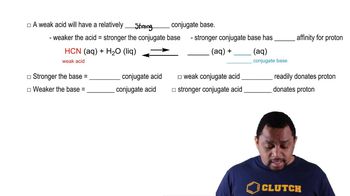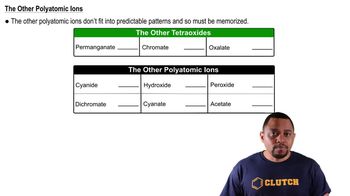Here are the essential concepts you must grasp in order to answer the question correctly.
Proton (H⁺)
A proton, represented as H⁺, is a positively charged particle that is essentially a hydrogen atom stripped of its electron. It plays a crucial role in acid-base chemistry, as it is often associated with the behavior of acids in solution. In aqueous solutions, protons do not exist freely but are typically associated with water molecules.
Recommended video:
Acid and Base Strength Concept 4
Hydronium Ion (H₃O⁺)
The hydronium ion, denoted as H₃O⁺, forms when a proton (H⁺) interacts with a water molecule (H₂O). This ion is the actual species that exists in aqueous solutions when acids dissolve, as it represents the transfer of a proton to water. The presence of hydronium ions is fundamental in determining the acidity of a solution.
Recommended video:
Acidity and pH
Acidity refers to the concentration of hydronium ions (H₃O⁺) in a solution, which directly influences the solution's pH level. The pH scale, ranging from 0 to 14, quantifies how acidic or basic a solution is, with lower values indicating higher acidity. Understanding the relationship between H⁺, H₃O⁺, and pH is essential for grasping concepts in acid-base chemistry.
 Verified step by step guidance
Verified step by step guidance Verified video answer for a similar problem:
Verified video answer for a similar problem:


 1:31m
1:31m